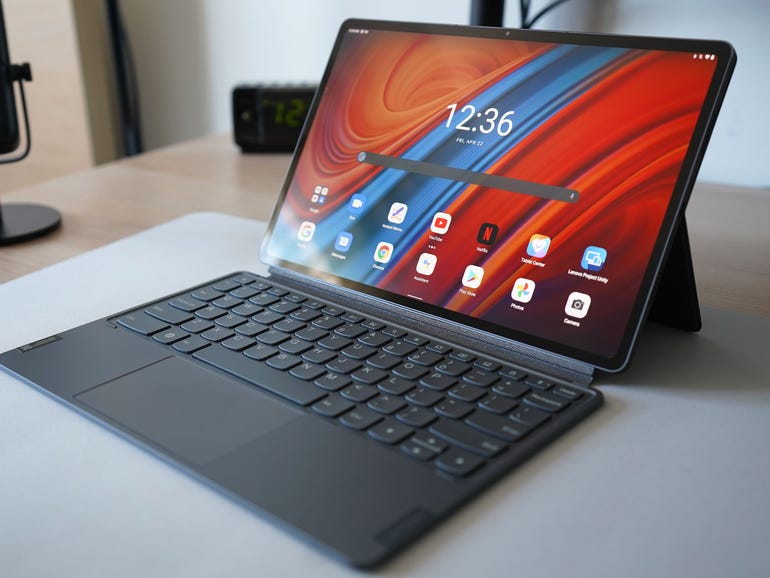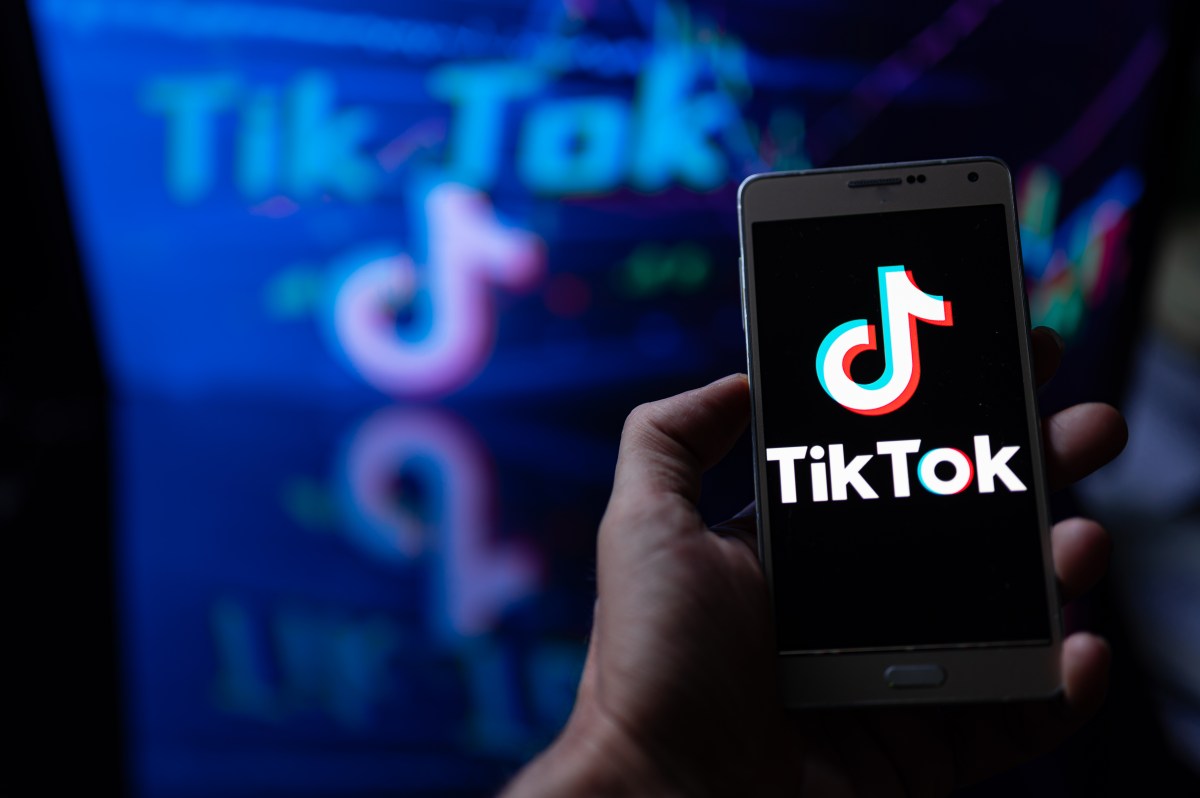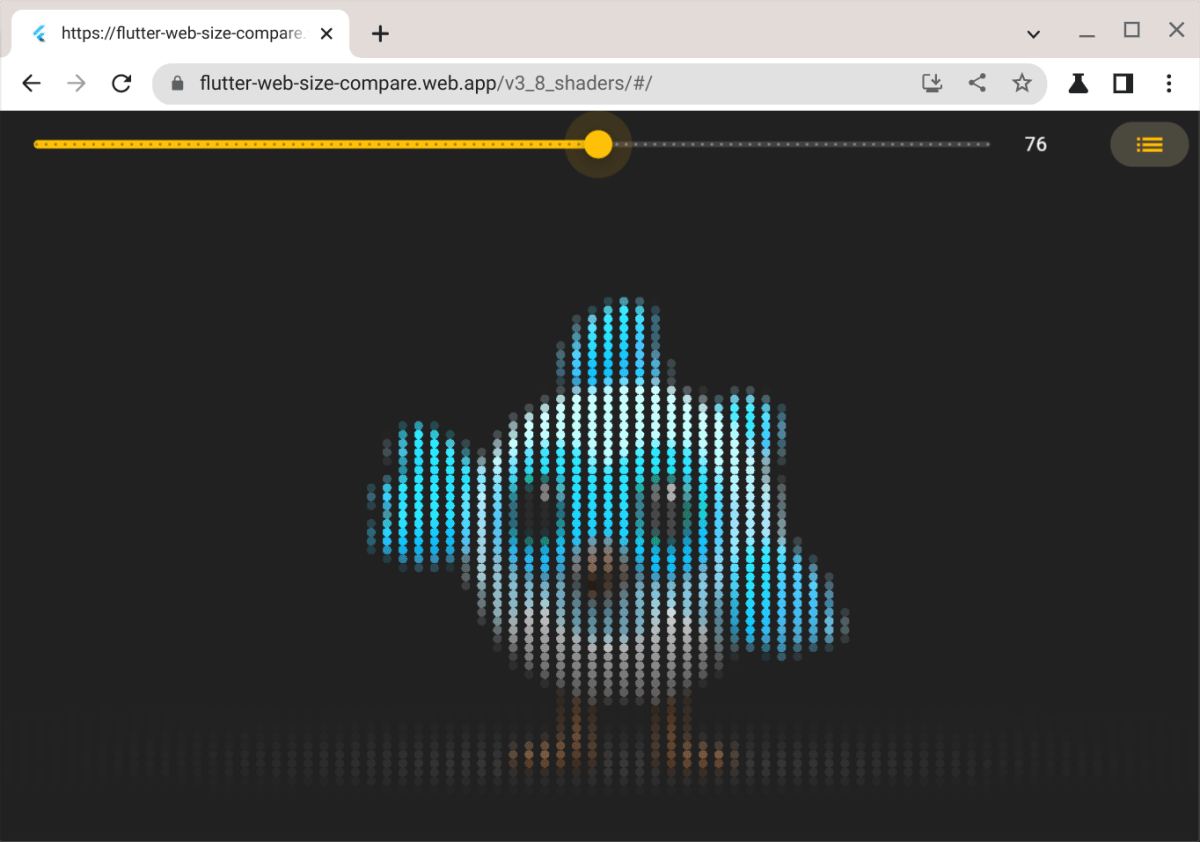Lenovo Tab P12 Pro review: The flagship Android tablet shoots for the Galaxy
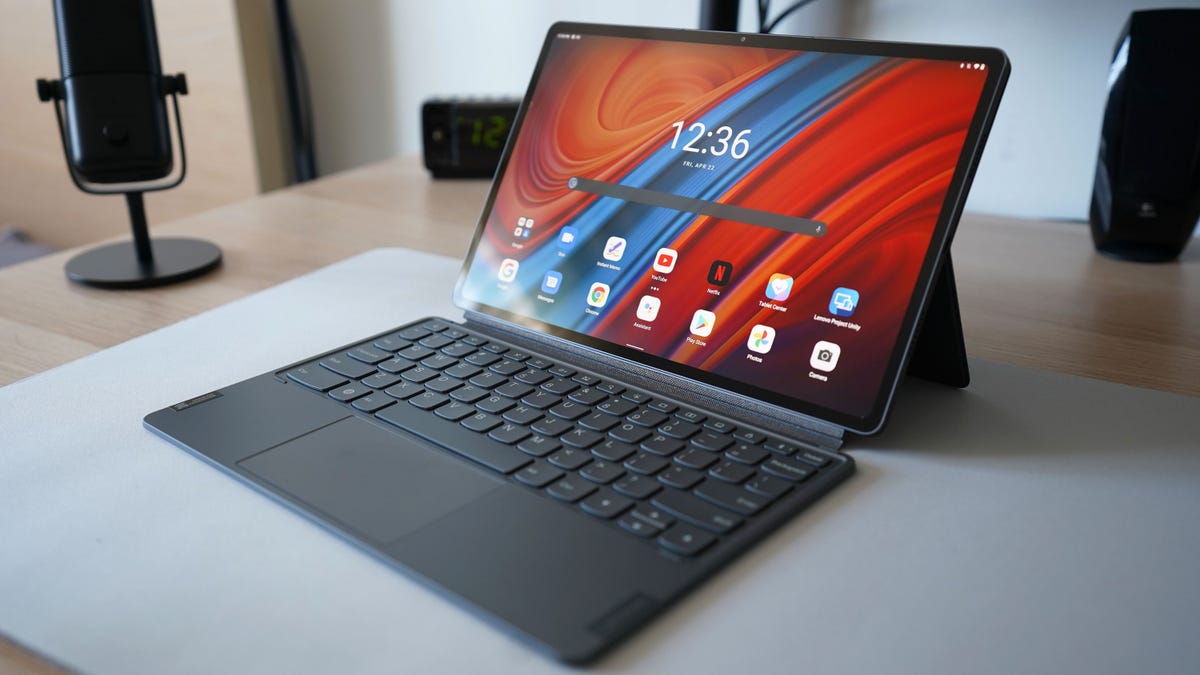
The Lenovo Tab P12 Pro becomes an all-in-one tablet when paired with the optional keyboard pack.
June Wan/ZDNet
It’s easy to make a case for Samsung as the top manufacturer of high-end Android tablets. On any best Android tablet list you’ll find its galaxy of A and S models, front and center. The Lenovo Tab P12 Pro is here to challenge the status quo.
On paper, the Android tablet’s specs rival that of Apple and Samsung’s best, including a large 12.6-inch display with 120Hz refresh rate, a massive 10,200mAh battery, and a Qualcomm Snapdragon 870 processor to carry the workload. The device is sleek and fashioned in a way that will appeal to most consumers.
At a starting price of $599, the Lenovo Tab P12 Pro is not as expensive as the iPad Pro or Samsung Galaxy Tab S8. But I would still put the tablet as a close second behind either of its competitors. Here’s why.

Like
- Large 12.6-inch display with 120Hz
- Lenovo Precision Pen 3 included in the box
- Long-lasting 10,200mAh battery
- Competitively priced
Don’t Like
- Software can be buggy and stutter
- Update policy includes just one major OS upgrade
- No 3.5mm headphone jack
Specifications
|
Processor |
Qualcomm Snapdragon 870 |
|
Operating system |
Android 11 (Upgradable to Android 12L) |
|
Memory |
6/8GB of RAM, 128/256GB of storage, expandable up to 1TB via MicroSD |
|
Display |
12.6-inch, 2K (2,560 x 1,600) OLED panel with 120Hz |
|
Brightness |
600 nits |
|
Battery |
10,200mAh, 30W charging |
|
Camera |
13MP rear camera (auto-focus) with a 5MP wide angle, 8MP front (fixed-focus) |
|
Connection ports |
Micro USB-C 2.0, 4-point Pogo pins, keyboard connector slots, MicroSD card slot, stylus port |
Gazing at the spec sheet, the Lenovo Tab P12 Pro is unquestionably geared for productivity and entertainment. These may appear to be polar opposites but both take advantage of the same high refresh rate screen and battery. The tablet also operates on Android 11, which isn’t the latest flavor of Google’s operating system, but it still retains useful one-handed features and multitasking quirks. An upgrade to Android 12 was previously slated for March 2022, but has since been pushed to June 30. More on software and update policies later.
Design
There’s no denying that Lenovo has yet again built an industrial and sleek tablet. The Tab P12 Pro weighs 565 grams (1.24lbs) which is a sliver less than competing 12-inch devices. Naturally, the tablet only gets heavier when you snap on the included Precision Pen 3 stylus and optional keyboard accessory. Both bring quality of life improvements to the device and have been attached to my review unit since I unboxed it.
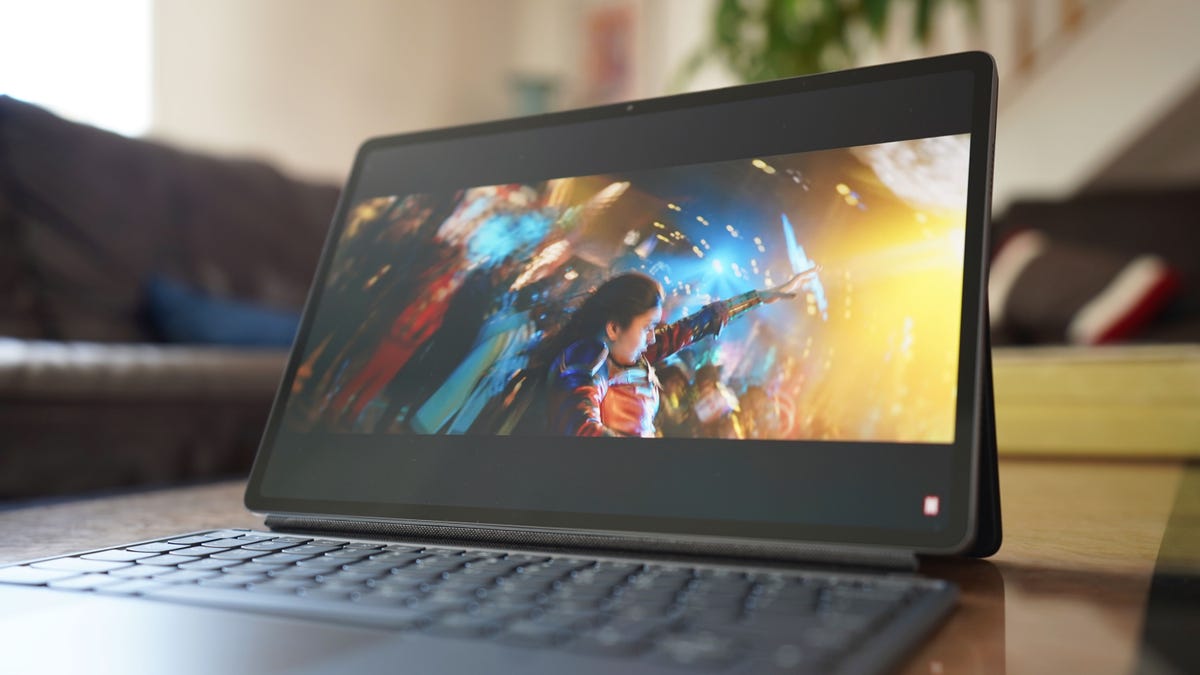
June Wan/ZDNet
The Tab P12 Pro is built with a blend of aluminum and metal, which keeps it durable but lightweight. It’s easily one of the thinnest tablets that I’ve used at 5.6mm, making it a solid option for users who seek portability. Even then, Lenovo managed to squeeze in a bevy of ports and connectors around the tablet, including USB-C for data transfer and 30W fast charging, four side-firing JBL speakers, a fingerprint sensor, pins for the keyboard accessory, and a microSD card slot.
The only thing missing here is a 3.5mm headphone jack for the audiophiles and gamers who thrive with zero latency audio. I should tip my hat to Lenovo for including a USB-C to 3.5mm dongle in the box, though.
On the back of the tablet are two features to note: a dual-camera array and a magnetic zone for a stylus. The main camera is a 13MP shooter capable of auto-focusing and the second is a 5MP wide-angle lens. While photos and videos look tolerable on the Tab P12 Pro — with decent contrast and processing that doesn’t over-sharpen — as I said in my Lenovo Tab P11 Plus review, you should never buy a tablet for its camera quality. A smartphone or DSLR is much more reliable for capturing your whereabouts, family, and friends.
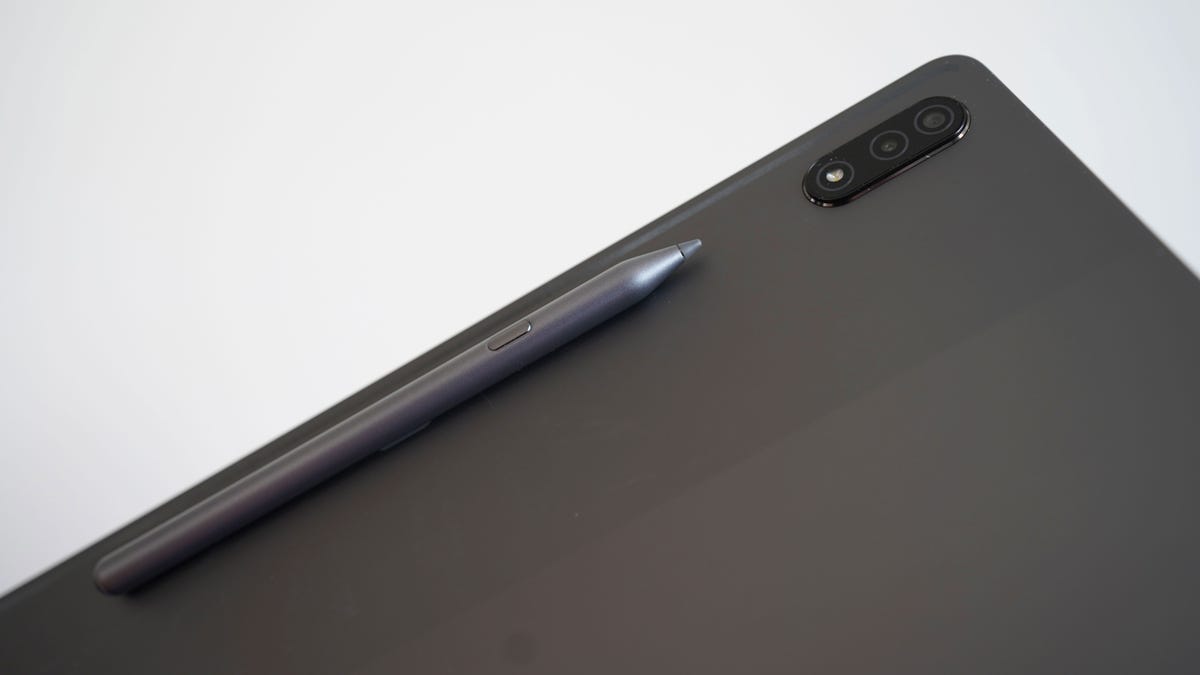
The bundled Precision Pen 3 magnetically attaches to the back of the Lenovo Tab P12 Pro.
June Wan/ZDNet
There’s no question that Lenovo took a page out of Samsung’s book with the magnetic housing for the Precision Pen 3. By clipping snuggly on the upper backside of the tablet (in landscape orientation), the stylus can be carried around and remain charged when not in use. The accessory itself has a cylindrical shape, a physical feature button, and a spring-loaded tip that supports 4,096 levels of pressure. Sensitivity-wise, the Precision Pen 3 rivals Samsung’s S Pen.
To doodle on, the Lenovo Tab P12 Pro has a beautiful display. It’s a 12.6-inch OLED panel that refreshes at 120Hz, but it’s also surrounded by slim and rounded bezels. This combination makes the tablet look and feel smaller than the numbers make it out to be.
Putting it beside the Samsung Galaxy Tab S7 or S8 Plus, you will likely need an extra second or two to discern which is the Lenovo. That’s a good thing; the Galaxy tablets are as good as Android tablet designs come.
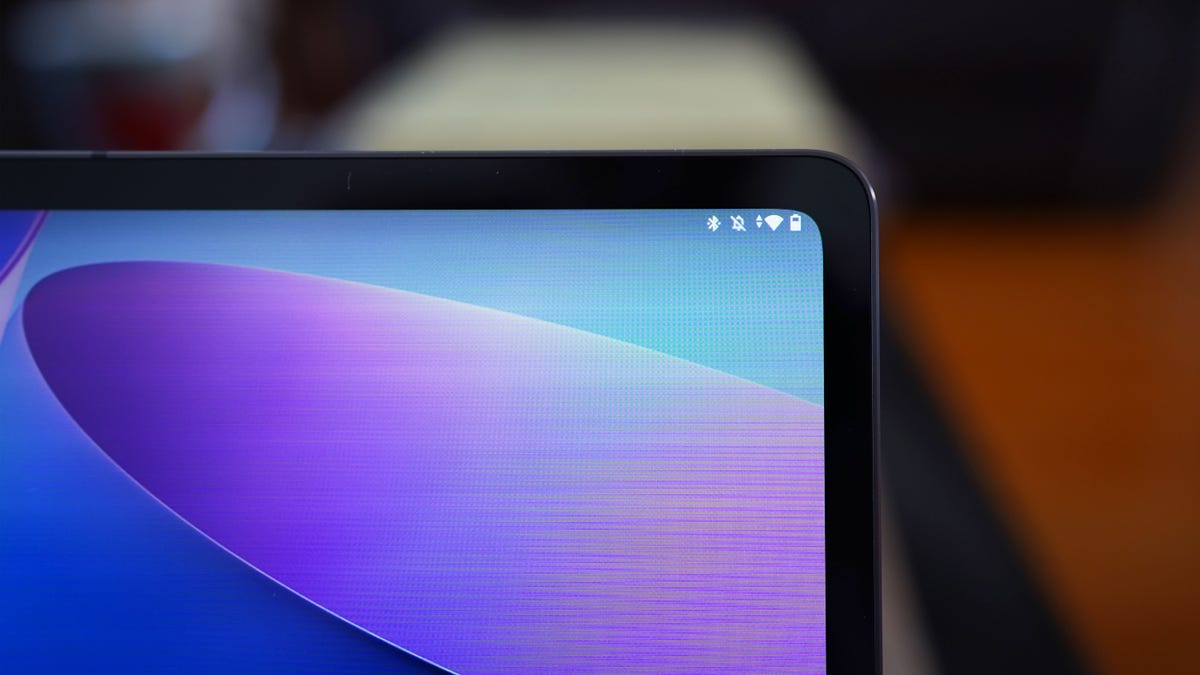
The Lenovo Tab P12 Pro has thin bezels that are rounded on the corners.
June Wan/ZDNet
With an OLED panel, the Tab P12 Pro delivers color-accurate, Dolby Vision-enabled visuals that make it perfect for streaming content and gaming. I also found the tablet very capable of handling outdoor viewing with its peak brightness of 600 nits. While not as luminous as the iPad Pro’s 1,000 nits, the Lenovo is a top performer — and the display only gets better when used indoors.
That is, until you’re using the tablet at night or binge-watching shows in bed. In terms of dimming, the Tab P12 Pro just doesn’t get dark enough to make nighttime viewing pleasurable to the eyes. (Then again, you should probably give your eyes a rest when it’s time for bed.)
Lenovo offers the tablet in only one color: Storm Grey. As triumphant as the name sounds, it’s just a bland grey finish. The paint is not as dark as a matte-black colorway but appears in an undertone that is just neutral enough to be accepted by casual, student, and enterprise users. On the bright side, the back’s satin finish helps to reduce fingerprints and smudges. The overall feel and finish is A-tier.
Also: The latest Pro Android tablets bring features that one-up the iPad
Performance
In terms of everyday performance, the Lenovo Tab P12 Pro holds itself well thanks, in part, to the Qualcomm Snapdragon 875 processor. The chipset is not the latest and greatest from Qualcomm, but it’s powerful and efficient enough to run high-graphics games, edit 1080p/60fps video, and run multiple apps at once. Coming in 6GB and 8GB RAM configurations, the Tab P12 Pro is able to switch between apps gracefully, while keeping older ones running in the background. Rarely did an app need to restart itself when opened after a period of time.
More: Why the struggle is real for Android tablets
These performance gains paint a picture that we often see with flagship Android tablets. While they’re capable of running mobile apps and games, the overall experience is nerfed by the operating system within. The Tab P12 Pro runs on Lenovo’s take on Android 11. From my experience, gesture-based navigation was helpful, the dynamic media controls played well with entertainment, and all the other Android perks were greatly appreciated.
More often than not, though, the tablet would need a second register — whether it’s a pinch out or swipe — to understand my inputs. From expanding YouTube videos to swiping picture-in-picture content away, the Tab P12 Pro had occasional delays and/or just didn’t understand what I was trying to do.
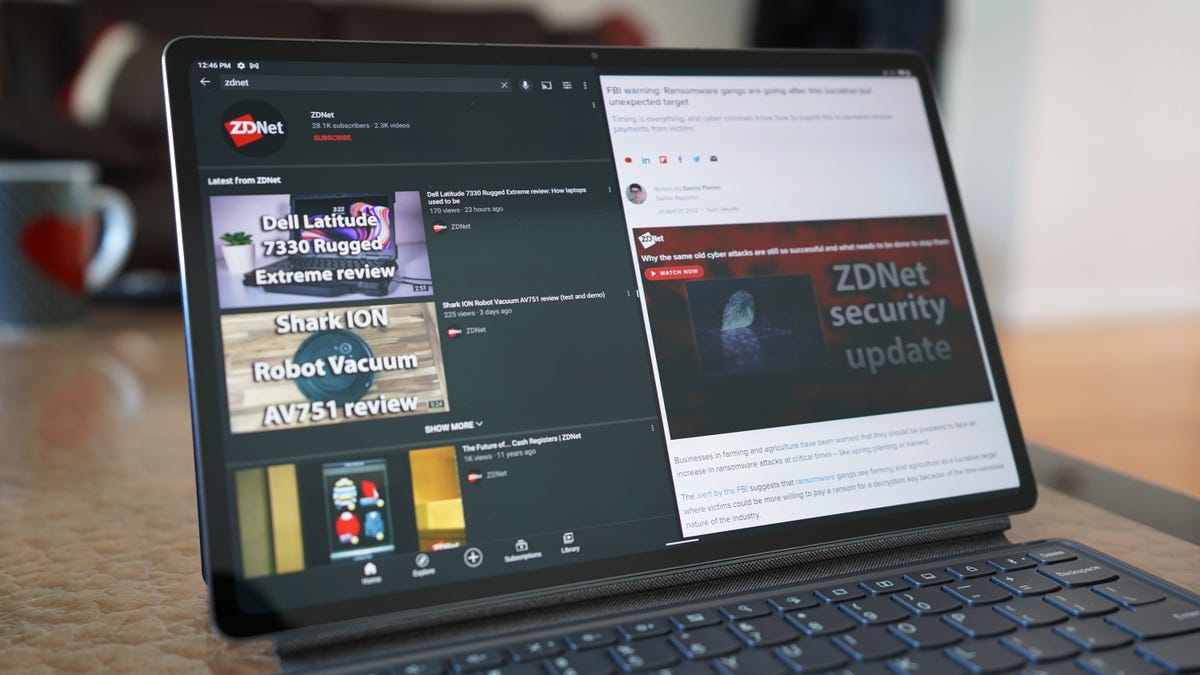
Productivity features like split-screen are easy to use and function similarly to Android smartphones.
June Wan/ZDNet
Taking advantage of the 12.6-inch screen, I spent a good part of my testing in split-screen mode and productivity mode. The former is when two apps fill the left and right halves of the screen. Like on Android smartphones, not every application is compatible with this behavior, which makes the tablet experience somewhat limited.
To remedy this, you can use productivity mode, Lenovo’s tablet-to-desktop toggle that presents apps in dedicated pop-up windows with a taskbar at the bottom for navigation. You can also snap windows by dragging them to the left or rightmost side of the screen, similar to a traditional PC. Like Samsung DeX, productivity mode can be turned on via the notification panel or the shortcut on the optional keyboard accessory. (For the ultimate mobile workstation, I’d highly recommend picking up the $149 keyboard as it provides an enhanced layer of input, alongside a slew of functional keys.)
Also: How to snap your windows on MacOS and Windows
There is one major annoyance that I have with productivity mode: it looks practically the same as when it’s turned off (see comparison below). Unlike Samsung’s tablet-to-desktop approach, which changes the orientation of the home screen, Lenovo’s just adds a taskbar and calls it a day. Unless you know for sure that you need pop-up windows, this visual indifference may not be the best incentive for the average consumer to switch modes.
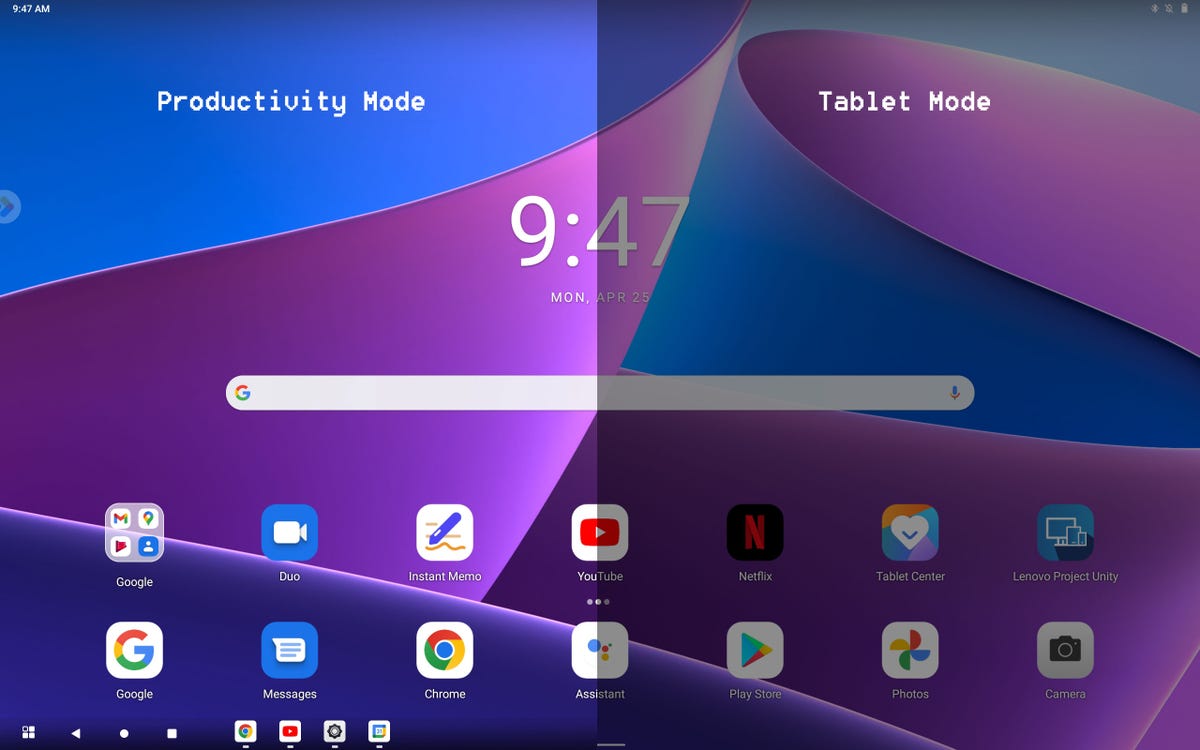
Compared to the default Tablet Mode, Productivity Mode adds a taskbar to manage active apps.
June Wan/ZDNet
For productivity, I’d recommend using Lenovo Project Unity (LPU) instead. Announced in late 2021 and now available to use on the Tab P12 Pro, LPU allows the tablet to pair wirelessly to a Windows laptop or desktop and effectively mirror or extend from it. This is quite the value proposition because the $599 tablet now doubles as a secondary display, which typically costs upwards of $400.
More: Best portable monitors: Work from anywhere
Again, LPU only works with Windows laptops and desktops, and it requires you to download the companion app through the Microsoft Store. But once you have it, pairing the computer to the tablet is as simple as typing in a code. I found this feature particularly useful when multitasking, as I needed numerous windows open at once. From reviewing devices to setting the Tab P12 Pro as my dedicated music player, LPU effectively integrates the tablet into any workflow.
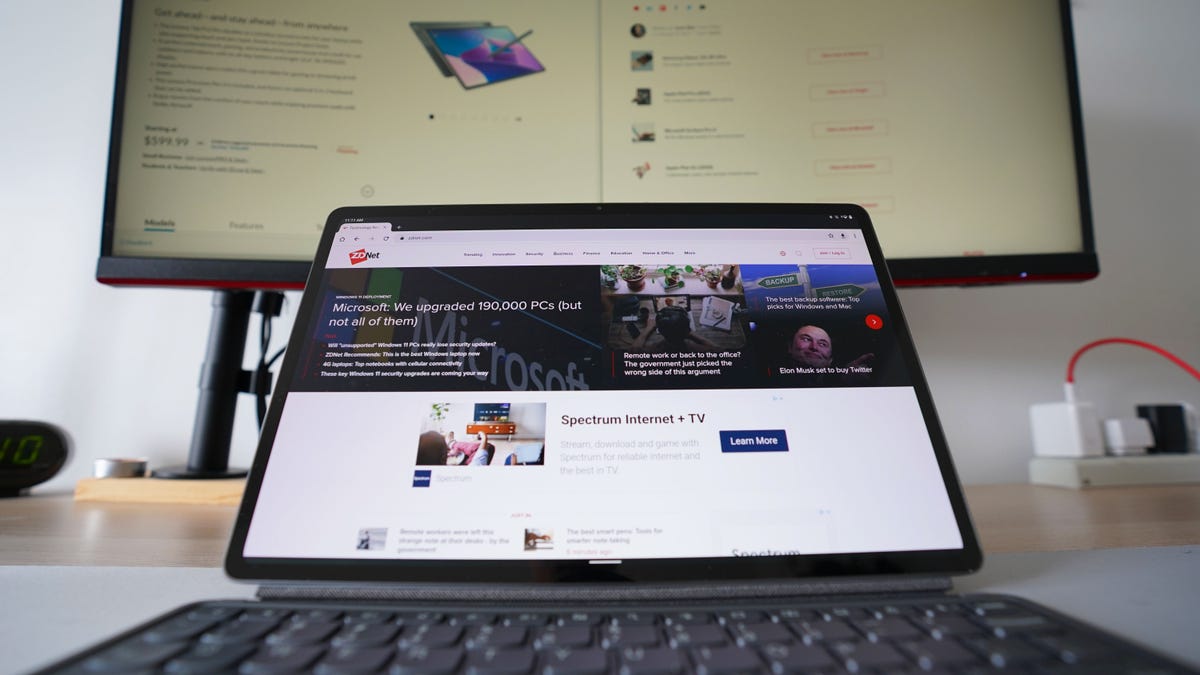
Through Lenovo’s Project Unity, the Tab P12 Pro can wirelessly connect and extend onto a monitor.
June Wan/ZDNet
Speaking of music playing, the sound quality of the Lenovo Tab P12 Pro’s JBL speakers is loud and punchy. The four grilles span across the sides of the tablet and support Dolby Atmos for immersive sound. My two gripes are: how tinny the audio can get when the volume is set higher than 65% and how the speakers are easy to muffle when held in landscape orientation. It’s no problem when watching shows on a stand, but for mobile gaming or handheld use, you’ll unknowingly find yourself covering the speakers half of the time.
Battery and longevity
The 10,200mAh cell in the Lenovo Tab P12 Pro is similar in size to the larger tablets from Apple and Samsung. On average, I scored about two days of usage before needing to charge the tablet with the included 30W adapter. And for faster speeds, you can plug the device into a 45W brick to take advantage of its Qualcomm Quick Charge 4.0 technology.
Two-day battery life is to be expected from a tablet that operates on such a big screen with a 120Hz refresh rate. Keep in mind that the two-day timeframe included hours of gaming and video streaming. With light to moderate use, I can easily see the Tab P12 Pro lasting until a third or fourth day. It all depends on your personal usage.
On the topic of longevity, here’s the lowdown of Lenovo’s software upgrade policy: The Tab P12 Pro will receive one major OS upgrade (to Android 12) and three years of security patches (until September 2024). This cadence is typical of Lenovo but certainly not as extensive as its competitors. For perspective, Samsung offers up to four years of OS upgrades and five years of security updates to its flagship line of tablets, while Apple remains in a league of its own with up to seven years. Those numbers put Lenovo’s $599 tablet to shame.
To give Lenovo some credit, the Tab P12 Pro is among the first Android tablets to receive Android 12L, Google’s rejuvenated (and promising) operating system that’s optimized for large-screened devices, including foldables. We’ll have more on that when the official version hits the market.
Bottom line
As a standalone tablet, the Lenovo Tab P12 Pro is priced competitively and makes for a stellar entertainment device. The large 12.6-inch display is great, and I appreciate Lenovo for including the Precision Pen 3 for those who need it. Until the official version of Android 12L arrives, I remain conservative in claiming that the Tab P12 Pro is the best of its breed. Minor inconveniences, like gesture bugs and input lag, disrupt what is a rather polished tablet, hardware-wise.
Alternatives to consider
Along with our running list of the best Android tablets, here are some worthy alternatives to the Lenovo Tab P12 Pro:

